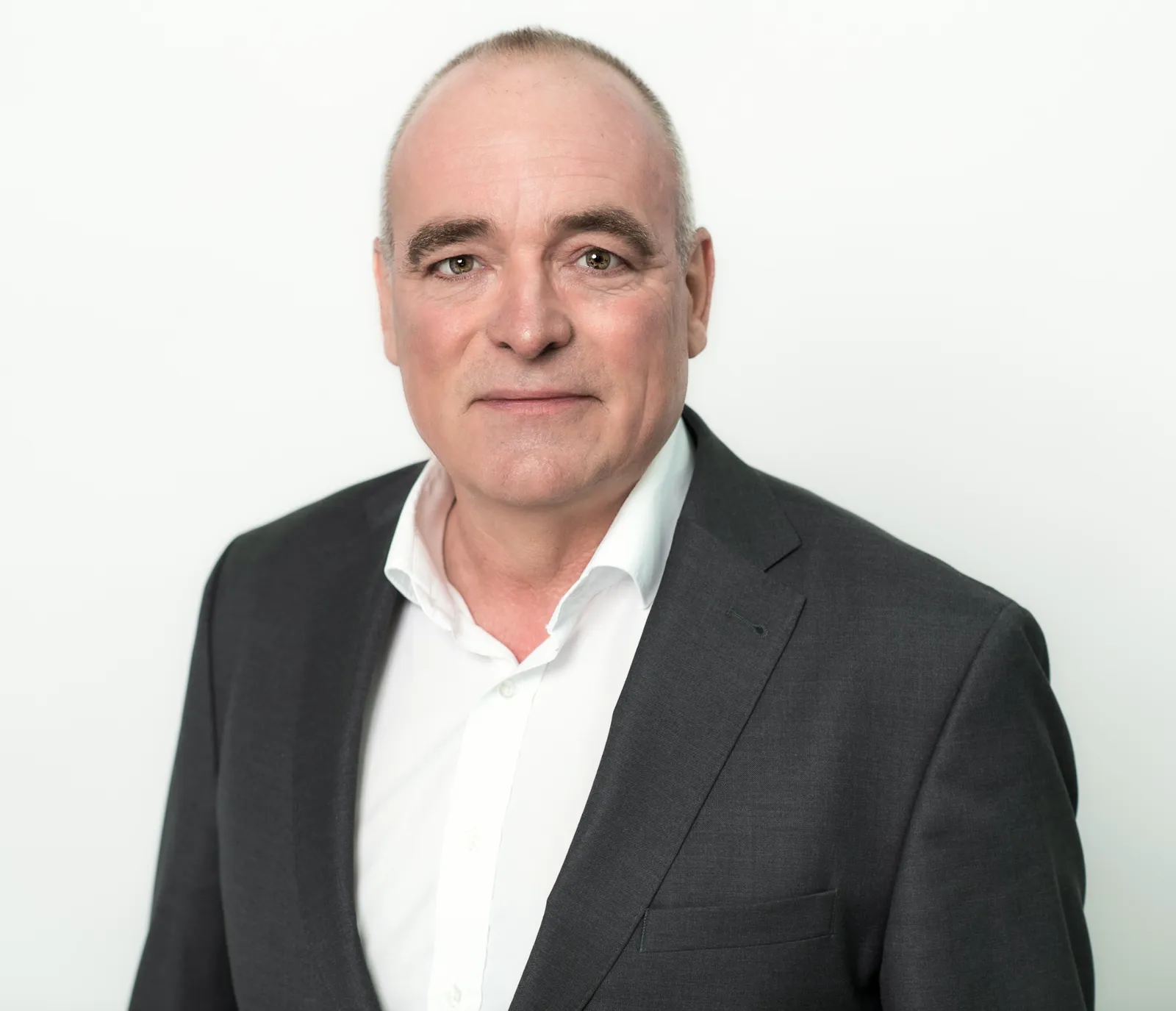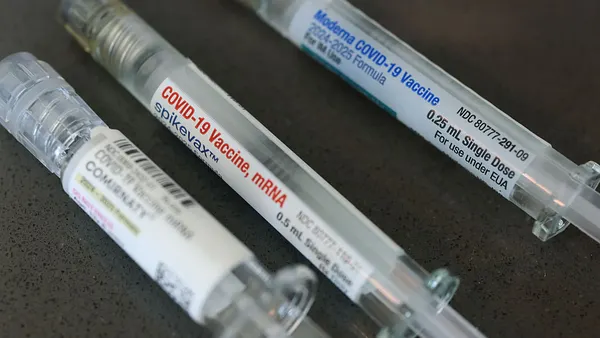This is the second installment of a two-part series examining pharma’s year ahead. The first installment looked at the various ways AI will shape the industry.
Pharma is always rife with medical breakthroughs.
In 2024, the industry witnessed a number of significant milestones, including an FDA nod for Iovance Biotherapeutics’ Amtagvi, the first approved cell therapy targeting solid tumors. Bristol Myers Squibb and Karuna Therapeutics also overcame a long-standing rut in schizophrenia with Cobenfy, the first new modality approved for the indication in decades.
But behind the scenes, companies face a complex swirl of challenges.
The Biden administration is set to announce the next batch of drugs up for price negotiations through the Inflation Reduction Act by Feb. 1, and anxieties over R&D progression still linger under a cloud of the IRA and other financial headwinds such as inflation. In response, leaders are adopting stricter pipeline management strategies, and boosting research ROI will be a top priority.
As companies develop the most advanced therapies, the process of conducting clinical trials and then ensuring access to patients when drugs are approved has gotten more complicated.
How will these forces shape the future of innovation in pharma next year? Here are the advances industry leaders foresee in drug development, clinical trial tech, policy and more.
Oncology’s next breakthroughs
SERDS could transform patient care

“In 2025 and beyond, we expect that cancer treatment will continue to evolve to better meet the needs of patients and offer meaningful advances. Particularly exciting are the advances we are seeing with oral selective estrogen receptor degraders (SERDs) in breast cancer, which offers an oral, at-home endocrine therapy option versus a 20-year-old standard-of-care treatment that must be administered via intramuscular injections in a doctor’s office. An oral treatment option gives patients a greater sense of control over their lives and empowers them to manage their cancer without affecting or interrupting their daily routine, including potentially fewer doctor visits and less time traveling to treatment.”
Dr. Lillian Smyth, senior vice president, global development head, breast cancer, Eli Lilly
Bispecifics will change immuno-oncology therapy

“In the past decade, checkpoint inhibitors have been widely established as the backbone immunotherapy across multiple tumor types, with other drugs layered on top for greater efficacy and increasingly becoming the standard-of-care in earlier treatment lines across a broad range of tumor types. The new drug class of PD-(L)1/VEGF bispecific antibodies will change the current landscape as more clinical data roll out, validating the improved benefit over first-gen PD-(L)1 inhibitors and setting a new efficacy bar for regulatory approval. The dual mechanism will allow these treatments to expand into cold tumors, where standard immuno-therapies have generally failed.”
Do Kim, senior research analyst, Water Tower Research
Combo therapies will trigger a shift in care

“The landscape of cancer treatment is poised for a big shift with antibody medicines paving the way by harnessing the power of the human immune system to fight disease. Targeted antibodies, such as antibody drug conjugates and bispecifics, will contribute to a shift in the way many cancers are treated and the landscape will evolve from traditional systemic chemotherapy to targeted combination therapies. With investment in antibody technology likely to continue in 2025, the pharmaceutical and biotech industries have a significant opportunity to leverage this science to develop innovations that will make a meaningful impact.”
Dr. Judith Klimovsky, executive vice president, chief development officer, Genmab
The cancer R&D pendulum will swing

“Pharma, biotech and the VC community will more urgently feel the limitations of the lack of new or novel oncology targets. The current ‘yellow flag’ will begin to turn red as the biopharma industry realizes that the risk-off environment of the past decade has led to an industry in which everybody is working on the same things and the de-risked programs companies have been focused on are being chased by everyone else.
The oncology drug development pendulum will swing from late-stage and de-risked assets because it is becoming increasingly hard to stand out in a crowded field where everyone is chasing the same targets.”
Kevin Parker, CEO, co-founder, Cartography Bio
Early-stage combo trials will expand

“With combination therapy at the forefront of innovative cancer treatment, we will see its application earlier in the clinical process. It’ll require some creativity and robust statistical models to validate the approach, but we will likely see combination therapies in more phase 1 trials within a dose escalation model. This approach can potentially save invaluable time for patients through an alternative development timeline, especially when a drug is designed specifically for combination treatment. It’s already become a reality for a small number of trials — specifically within oncology — but it has the potential to expand to more oncology trials in 2025.”
Francis Burrows, chief scientific officer, Kura Oncology
Drug development trends
Where the industry will see breakthroughs

“I anticipate significant advances and clinical trials in the following areas: genetic therapies, particularly RNA-based treatments and gene editing; [and] cell therapies, with a focus on regenerative medicine and cancer-killing cells.
And we’ll see the expanding application of artificial intelligence in healthcare.”
Robert Langer, co-founder, Moderna; advisor, Lindus Health
Drug development will focus on disease remission

“In 2025, there will be an increasing focus on disease remission as the treatment goal, both in immune-mediated inflammatory diseases and in cancer. For example, in conditions like rheumatoid arthritis and systemic lupus erythematosus, we will see more investigational medicines directed against new therapeutic targets and an increased focus on new modalities, such as CAR-T cells, T cell engagers and bispecific antibodies to improve disease outcomes. In cancer, a key question will be: How can we convert non-responders to immune checkpoint inhibitors into responders? For instance, viral immunotherapies will be used to educate the patients’ immune cells how to specifically recognize the tumor. The field will increasingly focus on combination strategies that can modulate both local and systemic immune responses to control disease.”
Dr. Paul Peter Tak, CEO, president, Candel Therapeutics
The first tri-specific antibody will be approved

“Bispecific antibodies have emerged as a transformative drug modality, driven by advancements in protein engineering, multi-ORF cell line development and process development. These innovations have delivered remarkable improvements in specificity and clinical efficacy. To date, 12 bispecific antibodies have gained regulatory approval, with many more in the pipeline. Looking ahead, I predict the regulatory approval of the first tri-specific antibody in 2025, paving the way for an expanding array of non-natural antibody-derived pharmaceutical formats. These formats are engineered for enhanced half-life, reduced cytokine release and other therapeutic benefits. When integrated into combination regimens with immune checkpoint inhibitors or cell therapies, they promise superior outcomes in oncology and immunology while extending their application to infectious diseases and autoimmune disorders.”
Claes Gustafsson, chief commercial officer, co-founder, ATUM Bio
AI and personalized medicine will transform R&D

“I see two growing trends shaping rare and neuroscience R&D in 2025: the continued use of advanced AI techniques and the expanded deployment of personalized medicine. Advanced AI techniques such as machine learning are transforming vast amounts of real-world data into actionable insights, becoming a critical component of clinical research, and that’s going to both speed and spread. Other fields — perhaps most importantly in the neuro-psychiatric space — are going to move increasingly towards personalized medicine and biological basis of disease. Alzheimer’s disease is an important first step in this direction, with the evolution to requiring biomarker-confirmed diagnoses, and this will move into other areas as the science grows. After elusive promise for years of the potential to develop tailored treatments, I’m optimistic that we increasingly have the tools to make it a reality.”
Dr. Elizabeth H.Z. Thompson, executive vice president, head, R&D, Acadia Pharmaceuticals
Spatial biology will bring new discoveries in translational medicine

“One of the applications that will benefit the most from genomics is the emerging field of spatial biology, which describes the study of cells in the context of the surrounding tissue, how they are located, how they build tissue and the study of their functionality. Under this umbrella, researchers have developed methods to quantify and characterize different molecules, including spatial transcriptomics, spatial proteomics and spatial genomics. There are several methods to detect these molecules, one of them being next-generation sequencing. As technologies evolve, this multiomics approach will become even more accessible and accurate. With improved resolution down to single cells and even single molecules, the genomic component will play a central role, and over the next several years bring important discoveries in translational medicine.”
Miguel Tam, director, strategic marketing, BioLegend
Metabolomics will step into the spotlight

“2025 will be the year metabolomics steps into the spotlight, revealing the biological ‘dark matter’ of elusive metabolites. Building on genomics and proteomics, we now have advanced tools and data platforms to uncover critical molecules — ‘needles’ in infinite molecular haystacks. This expansion will redefine therapeutics. Rather than refining old targets, we’ll discover entirely new molecules that complement precision medicine. Just as CRISPR and GLP-1 drugs revolutionized genetic and metabolic therapies, metabolomics will further unlock novel strategies that match the complexity of human biology.”
Dr. Andrea Choe, CEO, co-founder, Holoclara
Extreme weather will drive infectious diseases

“While the impacts of climate change on weather patterns, sea levels and temperatures are broadly acknowledged, the knock-on consequences for public health often go overlooked. Experts foresee more frequent extreme weather events in 2025, which are likely to contribute to increased levels of infectious and water/mosquito-borne diseases worldwide. Coordinated action and proactive collaboration to address the impact of climate change on public health will be crucial to safeguard global health and help prepare for future threats.”
Thomas Lingelbach, CEO, Valneva
Key readouts will come in the psychedelics space

"The psychedelic medicine space has evolved significantly over the past decade. Next year will see both late-stage data being disclosed from well-designed studies and the potential approval of first-generation psychedelics. A highlight will be Compass Pathways’ phase 3 top-line data on a psilocybin-based therapy for treatment-resistant depression, expected in the second quarter. Third or final generation molecules, known as neuroplastogens, are also emerging as a new frontier for neuropsychiatric conditions with a focus on producing rapid impact without hallucinogenic effects. Delix Therapeutics, for instance, plans to release phase 1b data for DLX-001, a novel neuroplastogen to treat major depressive disorder, in 2025, which will inform phase 2 trials.”
Mark Rus, CEO, Delix Therapeutics
Clinical trial changes
Research risk will be reframed

“In the next 12 months, the concept of risk will become the central factor in all clinical trial business decisions. However, this risk will be reframed as a key component of the ‘Probability of Technical and Regulatory Success.’ As the industry increasingly adopts a data science mindset, the focus will shift from ‘what if we do?’ to ‘what if we don’t?’ scenarios. The consequences of inaction — such as failure to recruit the right sites, treat the right patients or provide proper oversight — will spark a technology-driven, industry-wide revolution. Fueled by global uncertainties, the demand for success will outweigh the fear of failure.”
Andy Cooper, CEO, CluePoints
External control arms will gain traction

“In 2025, external control arms are expected to gain broader acceptance in clinical research, thanks to their ability to leverage real-world data from reliable sources such as electronic health records. This approach can help address significant ethical dilemmas in controlled trials where patients are randomized to placebo, even when effective treatments already exist; and in rare diseases, where there are often no or few treatment options available. In rare diseases, where there are smaller patient populations, ECAs allow researchers to utilize existing data, rather than finding enough patients to enroll.”
Sujay Jadhav, CEO, Verana Health
Emerging tools will streamline rare disease trials

“In 2025, the rare disease space will see clinical trials increasingly embracing adaptive designs and decentralized models to address the challenges of small, geographically dispersed patient populations. Advances in genetic and biomarker-driven patient stratification will enhance trial efficiency and precision, enabling faster identification of eligible participants. The integration of real-world evidence and digital health tools, such as remote monitoring and wearable devices, will make trials more accessible while reducing the burden on patients.”
Kiran Nistala, CMO, head of development, Zura Bio
Biomarkers will aid recruitment

“In 2025, we anticipate significant strides in clinical trial innovation aimed at reducing burdens on both clinical sites and participants. By leveraging advanced biomarker technologies, these innovations can enhance the precision and efficiency of clinical trial recruitment. For example, in Alzheimer's disease, biomarkers such as pTau217 can enhance trial efficiency and precision while lessening reliance on invasive procedures such as amyloid PET scans and lumbar punctures. This not only alleviates physical and emotional stress for participants but also streamlines the workload for trial sites.”
Jim Doherty, chief development officer, president, Acumen Pharmaceuticals
The industry’s site landscape could — and should — change

“The industry is trending towards there being more trials than there are sites to support them. There is no shortage of physicians who want to be involved in research but sponsors often look for sites with at least two years of demonstrated experience. However, a physician who doesn’t have much experience in commercial research may still be surrounded by teams who do. In 2025, sponsors should give new sites an opportunity to participate in studies. In addition, the industry is still treating networks like individual sites, and to maximize their benefit, they must be treated like a network with one single contract. We're going to see more movement in the site space with acquisitions and mergers — networks merging with other networks and dedicated research sites being acquired by larger networks or larger sites.”
Karen McIntyre, vice president, global site alliances, launch excellence, Parexel
The trial innovation boom will continue

“In 2025, our industry will continue to see a boom in clinical trial innovation. Over the last several years, we’ve seen an explosion of potential therapies, providing a tremendous opportunity to offer new medicines to patients in need. With this opportunity comes the challenge of executing clinical trials as efficiently as possible. Utilizing technologies like digital biomarkers, advancing health data interoperability, and applying AI and machine learning to improve efficiencies can dramatically improve clinical trial execution. Such technologies enable a deeper understanding of diseases, more precise measurement of treatment effects, a more inclusive approach to patient participation, and the ability to assess vast amounts of data. As we continue to explore and integrate these technologies into our clinical research, we are entering a new era of drug development.”
Bari Kowal, senior vice president, development operations and portfolio management, Regeneron
The need for novel endpoints will grow

“There is a growing need for novel endpoints that move the goal post to more impactfully improve patient outcomes by better highlighting the clinical benefits of the innovative treatments our industry is developing. Endpoints should not only measure the clinical benefits that patients and doctors deem important but should be tied to the mechanism of a medicine. It is critical to bring all involved groups including regulatory authorities, patient advocates, investigators and key opinion leaders, into the room earlier for R&D so that alignment on the clinical development pathway is achieved from the very beginning. Otherwise, we risk a medicine failing if we simply continue to follow precedent when bringing new treatments.”
Dr. Faye Feller, executive vice president, chief medical officer, Geron
SPAs could aid late-stage trials

"Much has been written about uncertainty surrounding the upcoming changes to leadership within the FDA and HHS. As a possible response to this, we may see increasing collaboration between sponsors and the FDA on late-stage R&D programs through efforts like the special protocol assessment process. By working directly with the FDA and maintaining an ongoing dialogue on trial design, the validity of evidence, endpoints and their analysis, sponsors can get critical buy-in via SPAs, or other collaborative measures, that can help de-risk late-stage development and increase confidence in their pivotal stage programs. Medicine is an inherently bipartisan endeavor, and SPAs can play a fundamental role in maintaining the pace of biomedical innovation."
Dr. Pravin Dugel, CEO, president, chairman, Ocular Therapeutix
Pharmas will need to address costs, payments and data

“As the clinical trials landscape evolves, several key trends will shape the sector in 2025. Cost management will remain a top priority. To reduce dropout rates, sponsors will work to address grant spending, which currently accounts for about 50% of trial budgets. Improving the financial management will require improved forecasting and transparency from start to finish.
Sites and sponsors will also increasingly address challenges associated with participant reimbursement. The industry is realizing that delayed and static payment options foster challenges in enrollment and retention. Organizations realize they will need more flexible and timely payment processes to improve outcomes.
With the expansion of clinical trial technology, sites and sponsors will also prioritize data ownership, especially as regulations and guidelines relating to data privacy and security increase across the globe.”
Zahiah Gueddar, senior director, commercial, IQVIA
Potential policy and commercialization shifts
The IRA will create challenges in drug development
“We will begin to feel the unintended consequences of the Inflation Reduction Act in the coming year, and it will significantly change the landscape of clinical trials and drug development as we know it. As pharma companies shift their focus toward fewer, high-value therapeutic areas in light of the IRA’s drug price negotiations, the overall number of clinical trials will go down. Additionally, we’ll see a move to multi-indication trials to maximize profitability. While this approach aims to improve ROI before potential price controls kick in, it complicates trial design and recruitment, increasing the time it takes to get treatments to market.”
Ariel Katz, CEO, co-founder, H1
Congress could impact rare disease R&D

“With key provisions of the Tax Cuts and Jobs Act set to expire this year, the upcoming tax debate in Congress will have significant implications for the rare disease community. Lawmakers have an opportunity to restore the Orphan Drug Tax Credit — an important incentive for companies working on rare disease treatments — to its historic 50% level. The opportunities for innovation in 2025 and beyond are enormous, but there is more Congress can do to defray the significant financial cost and risk that comes R&D for small patient populations.”
Stacey Frisk, executive director, Rare Disease Company Coalition
Coverage for obesity will expand

“We see a turning point in 2025 with insurance coverage for obesity care becoming reality. Leading advocacy groups and legislative champions are driving the passage of the Treat and Reduce Obesity Act, which is currently making its way through key congressional committees. I've made several trips to Washington over the past year to talk with legislators, and the bill has bipartisan support. Congress now has everything it needs, including Congressional Budget Office guidance, to make this a reality for patients and their families. Enacting this law marks the beginning of a new era, where patients with obesity are finally treated with the urgency and respect they deserve.”
George Hampton, CEO, president, Currax Pharmaceuticals
Manufacturing costs could rise
“My biggest concern for 2025 is the difficulty in sourcing active pharmaceutical ingredients for clinical trials. With the Novo-Catalent deal taking out some capacity in the CDMO space, the Biosecure Act impacting WuXi Bio as a supplier and the specter of tariffs already causing increases in clinical supplies costs from Canada and potentially China, I predict manufacturing costs for both clinical supplies and finished pharmaceutical goods will come under significant pressure in 2025. This may raise the cost of clinical trials and new drugs even higher.”
Ira Spector, CEO, SFA Therapeutics
New cell and gene therapies will expand care

“We’re on the cusp of a transformative moment in cell and gene therapy as we prepare for the next wave to come to market. One of the key trends in 2025 will be the transition of care from academic centers to community settings. The recent FDA approvals of two autologous solid tumor cell therapies, Iovance Biotherapeutics' Amtagvi and Adaptimmune’s Tecelra, will serve as a catalyst for this shift. As more solid tumor CGTs become available, academic centers will face growing capacity challenges, and patients and providers will increasingly want to access these innovative therapies close to home. At the same time, allogeneic cell therapies are also gaining traction, and Pierre Fabre Pharmaceuticals’ allogeneic T-cell immunotherapy, which has a PDUFA date in April 2025, could be the first in a new wave of medicines that use cells from donor patients to streamline manufacturing and drive broader accessibility of CGTs.”
Joe DePinto, head, cell, gene and advanced therapies, McKesson
More rare disease companies will launch their own products

“In 2025, we will see more biotech companies independently commercializing their own products. The potential revenues from a category like rare disease would represent a challenge to ‘move the needle’ on a pharma revenue line constructed of common population products, raising the bar for pharma interest in rare disease. In this context, the unmet need in rare disease persists and the profitability profile of a category that requires smaller registrational studies, with a faster path to approval and modest commercial infrastructure remains. Biotech companies are now in a unique setup to lead the way commercially in rare disease, and we are seeing an increasing number of definitive commercial success stories in these rare diseases, with many more to come.”
R. Nolan Townsend, CEO, Lexeo Therapeutics

















